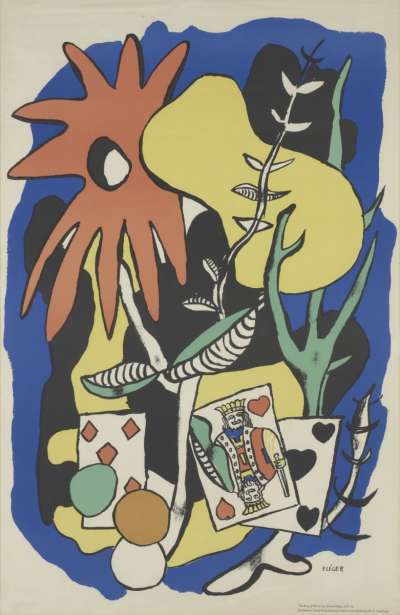(1881 - 1955)
Fernand Léger was born in Normandy, France and grew up in a family of cattle farmers. He worked as an architectural apprentice in Caen before moving to Paris in 1900, where he supported himself as an architectural draughtsman while he studied painting. He began exhibiting work in Paris. An emphasis on geometry and drawing made itself felt in his work after he saw a retrospective of the painter Cezanne’s work. By 1911 he had been identified as a Cubist whose more tubular forms led him to be bracketed under ‘tubism’. His paintings had become more abstract but the First World War, and his experience in the French Army, was to completely shift his artistic trajectory. He began painting more mechanical imagery after the war. This formal clarity and subject matter reflected the ‘return to order’ seen in the arts in the immediate post-war period. By 1927 however, his work had become more organic with more irregular forms. He travelled to the US and exhibited at the Museum of Modern Art in New York in 1935. He remained in the US during the Second World War, painting, among other things, landscapes with industrial forms – a response to his observations of industrial refuse in the landscape of the USA. Inspired also by the neon lighting of New York City, he began painting figures and objects juxtaposed with bands of colour. He returned to France in 1945 and joined the Communist Party. His work had started becoming flatter and more stylised. In the years before his death in 1955, he had expanded his practice further to include book illustration, murals, stained-glass windows, mosaics and set and costume design. His works feature in many key collections from the Metropolitan Museum of Art in New York to Tate Modern in London.
